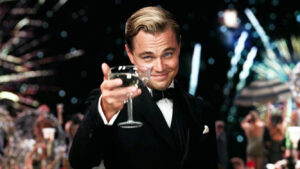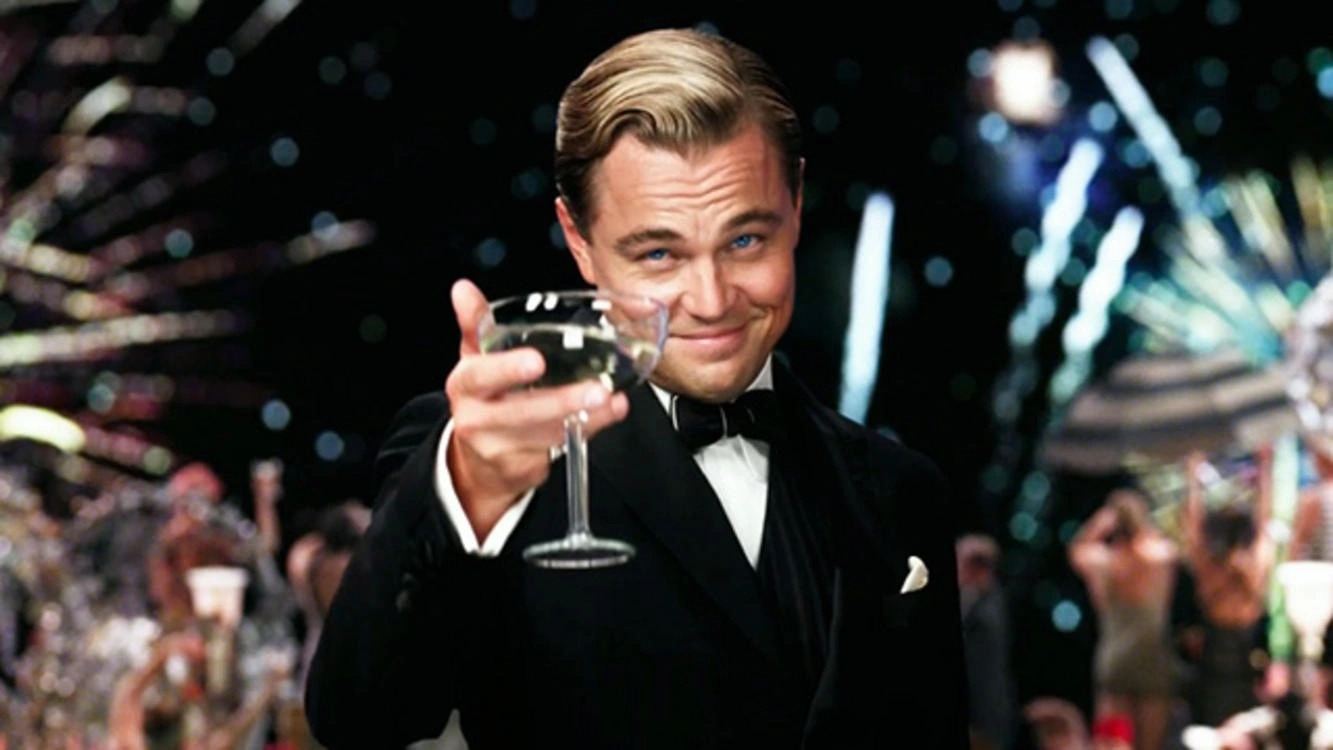The Great Gatsby
Posted on May 9, 2013 at 6:00 pm
Kids, here’s a hint: Don’t think you can pass a sophomore English exam on F. Scott Fitzgerald’s jazz age classic and high school reading list perennial by watching this movie. While this version of the story of a man who changes everything about his life so that he can win back the woman he loves hits the Cliff’s notes highlights, spending more time on the green light on the dock than Gatsby and on the eyeglass billboard than Nick Carraway, co-writer and director Baz Luhrmann misses the forest for the trees. His trees are fun to look at, though.

It goes off the rails from the very first moment, when it turns out that narrator Nick Carraway (Tobey Maguire) is telling the story in a snow-covered sanitarium, presumably because the events he is about to disclose are so traumatic they have caused him to have a breakdown. Or, perhaps this is Luhrmann’s way of eliding Carraway with Fitzgerald himself, though there is no indication that Fitzgerald wrote this book as therapy.
The more significant violation, though, comes from the mangling of the book’s famous opening lines. Like the book, the movie begins with Carraway telling us that his father warned him not to judge people. But it leaves out the most important part — the reason why. “In my younger and more vulnerable years my father gave me some advice that I’ve been turning over in my mind ever since. ‘Whenever you feel like criticizing anyone,’ he told me,‘just remember that all the people in this world haven’t had the advantages that you’ve had.’” This is crucial for understanding the way Nick looks at Gatsby and his rival, Tom Buchanan. But Luhrmann inexplicably does not think it is worth including.
Perhaps it is because he is so eager to get to what matters to him, the pageantry. He is the genre/mash-up “Moulin Rouge” guy whose motto seems to be “more is still not enough, even with glitter on it. And firecrackers. And 3D. And Jay-Z.”
The story takes place in 1922. Nick is a WWI veteran who has literary tendencies but is working at a low-level job “in bonds” on Wall Street. He is living in a small cottage in the Hamptons, next door to a vast mansion owned by a mysterious man named Jay Gatsby (Leonardo DiCaprio), who gives fabulously decadent parties but is seldom seen. They are across the bay from the old-money side, where Nick’s cousin Daisy (Carey Mulligan) lives with her wealthy, upper class, polo-playing brute of a husband, Tom Buchanan (Joel Edgerton). He is having an affair with Myrtle (Isla Fisher), the restless wife of the struggling owner of a garage.
It turns out that Daisy and Gatsby knew each other five years earlier, when he was in the military and before she was married to Tom. But “rich girls don’t marry poor boys.” Gatsby has changed everything to change himself into the man Daisy could have married. He lives across from her home so he can look toward her (and the green light on her dock). He hopes that his parties will lure her to his home. When he discovers that his neighbor is her relation, he goes to great lengths to assure Nick that he is trustworthy and to persuade Nick to invite him to tea with Daisy, so he can see her again. He is convinced that they can erase the past and go on together as though five years that included her marriage and child never happened. Nick admires Gatsby for his ability to hope. And in Lurhmann’s version, that is a quality that more than makes up for the compromises and selfishness of Gatsby’s single-minded quest.
Of course, thoughtful consideration of issues like those is not the purpose of this film. It is a confetti gun of a movie, all sensation and senseless mash-up. The party scenes and period details are gorgeous for the sake of gorgeousness, with no sense of perspective or irony. Fitzgerald, who had a love-hate relationship with wealth and status, had some ambivalence in his descriptions of the characters luxuries, but in general Lurhmann’s portrayal of the negligent opulence of the old money Buchanans and gauche display of the new money Gatsby is somewhere between awe and envy. The Jay-Z-produced soundtrack is not as anacronistically intrusive as one might fear, only because the sensory overload barely allows it to register. But it is thin compared to the book. Fitzgerald’s carefully chosen songs and the lyrics of the era that he included are far more evocative and illuminating as words on a page than all of the thump thump thumping of the music we hear.
Luhrmann may be trying to make some point with the marginalization of African-American characters, relegated to playing music, dancing, and looking on at what the white folks are doing from tenements. But it is distracting and unsettling to see them treated as just another set of props. But then, the white characters are not much more than props, either, with a director more interested in posing them and moving the camera than in any kind of performance. Daisy’s friend Jordan (Elizabeth Debicki), impossibly long and thin, is like a Giacometti sculpture towering above mere mortals. DiCaprio has some affecting moments, but seems too old and too sleekly comfortable for the role.
After at least five unsuccessful attempts to make this novel into a movie, it may be time to declare it unfilmable. There is no cinematic equivalent to Fitzgerald’s voice. This is not “The Great Gatsby.” It’s an often-visually pleasing kaleidoscopic music video with a 3D shower of shirts.
Parents should know that the movie features violence including murder, suicide, a fatal traffic accident, and domestic abuse, also drinking and drunkenness, pills, smoking, sexual situations that are explicit for a PG-13, and brief strong language including racist and anti-Semitic epithets.
Family discussion: What do the green light and the billboard symbolize? Why does Nick say that Gatsby is hopeful?
If you like this, try: the book by F. Scott Fitzgerald and compare this to the other versions, including the 1974 Robert Redford film, the Mira Sorvino miniseries, and the updated “G”



